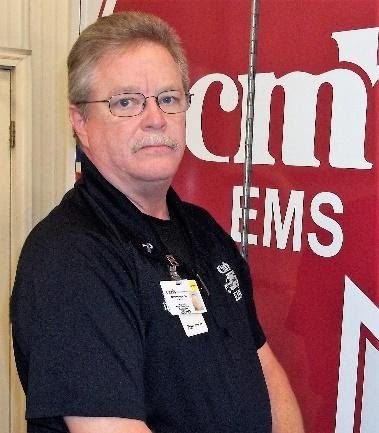Tips to Help You Build Situational Awareness
 What are you doing right now? Sitting in the station, waiting for tones to drop on the next call, or posting out away from the station? Do you know what is going on around you at any given moment?
What are you doing right now? Sitting in the station, waiting for tones to drop on the next call, or posting out away from the station? Do you know what is going on around you at any given moment?
Today, in our industry, “safety” has become a keyword and catchphrase in every aspect of providing service to the public. From personal safety to vehicle safety to scene safety to patient safety, all of these require a high degree of situational awareness.
What Is Situational Awareness?
Situational awareness can be challenging, especially to new providers, and many factors interfere with maintaining it: stress (personal or work-related), workload (increased call volume), complexity (task orientation), and preconceptions (personnel issues).
So, what is “situational awareness”? What is this all-encompassing, 360-degree awareness that famed comic book characters always seems to have like in the real world? For emergency providers, there is one distinctive meaning: the ability to identify, process, and comprehend information during the normal day but most especially during an emergency call. More simply, it’s knowing what is going on around you at any time of the day! Awareness is the key to understanding your personal safety, the safety of your partner, and the safety of your patient.
How Do You Develop Situational Awareness?
Wait, how does one develop this ability? Knowing what is going on around you at any given time can be stressful; however it may be as easy as changing a few of your own personal habits, and a few come to mind when relating to emergency providers. Here are some key aspects to consider in situational awareness training.
1. Guts
Trust your “gut,” feelings, or instincts in certain situations. Situational awareness and safety go hand in hand. If you’re working a vehicle accident and the scene “feels” unsafe, it probably is. The human body can subconsciously detect certain stimulus and trigger fight-or-flight behavior before we can consciously put it into play. If you’re feeling uneasy during a domestic call and objectively nothing appears wrong, trust your instincts and exit the current scene or situation. In the short term, you may not have needed to, but for you and your partner’s safety, it’s important to recognize those feelings and act on them.
2. The Senses
The human body has an array of senses to let you know something is amiss. That “Scene Safe/BSI” mantra we all learned in our basic class was designed for a purpose. Never let your situational awareness slip! For instance, when rolling up on that nasty motor vehicle accident or a domestic abuse call, take the time to do a quick assessment. Is there a smell you can’t identify? Are people talking quietly or arguing aggressively? When you step onto a scene, utilize your senses and mentally compare the abnormal to the normal and assess the whole scene, which may reveal a particularly hazardous situation. Utilize your peripheral vision to assess what is not directly in your line of sight. Look for the potential hazards during that roadside incident: Is the scene protected? Is everyone wearing appropriate safety gear? Is law enforcement on scene to provide for a safe scene? Identifying hazards or threats, and correcting them on that scene size-up, allows you to focus on the reason you were called.
3. Time Bandits
It’s important to remember that the pace or flow of the emergency call is directly affected by team member actions, completion or incompletion of assigned tasks, and, of course, the environment. Unplanned or unaccounted for events during a call can throw the whole pace or flow of the call off. For example, say your cardiac monitor goes on the fritz, which happens. What is or could be your fallback to ensure good patient care? Or, during the call, you determine this patient needs to be evaluated in a different facility that’s farther away. These can cause complications and steal critical time if you do not identify them and adjust accordingly. Monitor your team and be able to adjust their task assignment and performance as needed. Being able to reassess and reevaluate the scene or situation can help in keeping the flow or pace moving on the call and developing situational awareness.
4. Complacency
This usually occurs when the level of comfort is so high that we fail to train or maintain our awareness to the highest standards or levels possible. When we don’t keep the “knife-edge” of training and awareness at its sharpest level, we tend to let down our guard during critical situations. Above all don’t get distracted; focusing on only what’s in front of you degrades your awareness. Maintain that sharp edge by keeping up with the current educational trends, taking situational awareness training, maintaining high levels of proficiency in skills, and, most importantly, learning new things!
5. Fatigue
This can have a serious impact on every level of awareness. Being tired on that cardiac arrest call could have a detrimental effect on the patient outcome or while responding to a vehicle accident. The low level of attentiveness or focus may leave you totally unaware of surroundings, especially if you’re hungry, dehydrated, or just plain exhausted. Ensure you are getting enough rest before the duty cycle, make sure you’re eating at regular intervals, and above all stay hydrated, even in the colder months.
So, What Are You Working On?
Developing and practicing a few personal skills, traits, and behaviors are very important in developing situational awareness. Over time, experience and education will heighten and strengthen these skills and traits. Consult with your more experienced team members, inquire about how they developed this sixth sense. For more detailed information on developing situational awareness as an EMS provider, check out CareerCert’s online course on workplace and situational awareness. Another great place, although not EMS-specific, might be personal security websites, which are always filled with interesting information on this topic.
Staying aware of your surroundings during your shift, on the emergency call, and when returning from the call is an important aspect of remaining safe on the job. We must be vigilant to avoid the loss of situational awareness in everyday operations so that we can better care for our partners and those we serve.
References:
Blanchet D. Crew resource management and EMS. Journal of EMS. Nov 1, 2010.
Cooper J. Principles of Personal Defense. Paladin Press. 2006.
Heightman AI. Situational awareness advice for EMS Providers. Journal of EMS. Apr 1, 2017.
How to improve your situational awareness: 13 simple tips.The Prepared Survivalist. Accessed Jan 27, 2020.
Lipscomb K. Loss of situational awareness. Virginia Beach EMS. Oct 11, 2019.
McCallion T. Creating an EMS culture of safety, NHTSA Reviews final report. Journal of EMS. Jun 12, 2013.
National EMS Advisory Council. Fatigue in emergency medical services: final advisory. Jan 30, 2013.
National EMS Safety Council. Loss of situational awareness. Infographic. National EMS Safety Council.
VFIS. Emergency scene situational awareness – The key to safe operations. 2010.
3 effective techniques to train your situational awareness and recognize change. Imminent Threat Solutions. https://www.itstactical.com/intellicom/mindset/3-effective-techniques-to-train-your-situational-awareness-and-recognize-change/. Aug 13, 2013.
 Michael Minter, MsEd, Paramedic; I/C/E, EMS Educator, has served in the fire, EMS, and rescue industries since 1977. He joined the US Air Force in 1982 and continued to work as a firefighter and EMT, later becoming a station captain, assistant chief of operations, and assistant chief of training. Beginning in 1996, he served as a field paramedic for several years before becoming an EMS education program director.
Michael Minter, MsEd, Paramedic; I/C/E, EMS Educator, has served in the fire, EMS, and rescue industries since 1977. He joined the US Air Force in 1982 and continued to work as a firefighter and EMT, later becoming a station captain, assistant chief of operations, and assistant chief of training. Beginning in 1996, he served as a field paramedic for several years before becoming an EMS education program director.

